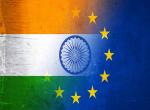US President Donald Trump’s proposition to acquire Greenland through sale has sparked debate and put the world’s largest island back on the global agenda. This brings to the forefront the need to understand the history of Greenland’s ownership, the ever-evolving geopolitical significance of the island and the challenges and opportunities confronting it.
Situated in the cold waters of the North Atlantic, this landscape has maintained its salient significance on the sidelines of European and transatlantic history. Located in the resource-rich Arctic region, 80 per cent of its territory is covered with ice and rugged tundra.[1] Although sparsely populated, the island is repository of a number of critical raw minerals which include graphite, lithium, iron, uranium and several rare earth minerals. Highly relevant owing to the rising demand of electric cars, Greenland’s reserves are a strong pull-factor for major powers across the globe. Occupying a unique geopolitical positioning between US and Europe, the island is also part of a strategic maritime region called the Greenland-Iceland-United Kingdom Gap with the North-West Passage shipping lane running along its coast.[2] The island remains at the centre of the Arctic trade with new shipping routes being made possible through the impact of climate change. As the American, Russian, as well as Chinese aspirations to create a presence closer to the Arctic grow, Greenland comfortably settles into its place as the Queen of the Arctic Chessboard.
Greenland’s position of strategic importance spans centuries and can be traced back to when the Paleo-Eskimos and Vikings ventured into Greenland in the pretext of securing access to hunting grounds and trade routes. Denmark’s claim to Greenland began with the island’s colonial phase in 1712. A small European power looking to bolster its power, Denmark facilitated Norwegian-Danish priest Hans Egede to establish a mission to begin trading activities near what is now the capital Nuuk. As a Danish colony, Greenland faced stark discrimination and inequalities-political, social, and economic. This phase of colonial governance was marked by a strict divide between Danes and Greenlanders manifesting in forms of disparities in rights and opportunities in the legal framework. For centuries, the symbolic Danish control over the island continued, however, the largely inhospitable landscape of Greenland kept it far away from relevance in the world order. It was only with the coming of the 20th century that Greenland’s role as a pivotal player in global geopolitics took centre-stage.
With the onset of World War II, the German occupation of Denmark in 1940 led to the beginning of US engagement in Greenland. Identifying Greenland’s strategic position in the North Atlantic, the US began the process of establishing its bases on the island’s territory, in order to protect against Nazi incursions, as a result of an agreement signed between Greenland and US on April 9,1941.[3] By the end of the war in 1945, the US had already established 17 bases across the island, making Greenland’s role in global security strikingly clear. To the Americans, Greenland was no longer a frozen and barren wasteland but a landscape which resonates with a valuable chess piece in the larger game of power.
As the island emerged from the ashes of World War II as a key player in the Arctic, Greenland began its journey towards autonomy in 1953 as it acquired the status of an overseas county within the kingdom of Denmark. This phase brought in significant economic development and modernisation in the region, such that Greenland was now being recognised as a wage-earning society, as opposed to a traditional hunting society. By 1970s, there were calls for greater strategic autonomy and self-determination, which culminated into the Greenland Home Rule Act of 1979.[4] Though Denmark retained control of foreign affairs, finance, and the defence sectors, this act formalised the transfer of authority of most public sectors to Greenland. Further greater autonomy was acquired through a Self-Governing Act following a referendum in 2009.[5]
Today, Greenland is an autonomous and self-governing territory of Denmark, with the right to secede whenever it wants by means of a referendum. Although not a member of the regional bloc of the European Union, it enjoys a special status with access to EU funds and freedom for all Greenlanders, who are considered EU citizens.[6] Further, the island is also covered under the mutual defence clause laid out by Article 42(7) the EU treaties, which requires all Member States to have “an obligation of aid and assistance” if Greenland falls victim to armed aggression on its territory.[7]
While the Greenlandic Prime Minister has clarified that “Greenland is not for sale,” and the Danish Prime Minister has reaffirmed that “Greenland belongs to the Greenlanders,”[8] it is interesting to note that historically, US Presidents Andrew Johnson and Harry Truman had attempted to purchase Greenland through sale in 1867 and 1946 respectively. Greenland’s perception as a real estate also dates back to a 1917 treaty between US and Denmark, involving Britain and Canada as well. According to Denmark’s last minister for the autonomous territory of Greenland from 1982 to 1987, this treaty was signed on the pretext that if Denmark ever decides to sell Greenland, United Kingdom would have the first right of pre-emption- to buy it or be consulted on its future.[9] An offer of sale has also been made during Trump’s first-term, firmly rejected by Denmark with Prime Minister Mette Frederiksen calling it “absurd”.[10]
Extrapolating these trends to Trump’s second term, the incoming US administration has introduced a “Make Greenland Great Again” bill in the House of Representatives, in order to authorize talks for the purchase.[11] While Trump claims that taking control of Greenland is of absolute necessity for US national security, his unpredictable decision-making and transactional diplomacy is highlighted with the fact that he does not rule out the possibility of escalating military aggression or economic conflict against Denmark in order to acquire the island. Trump accuses Denmark of committing a “very unfriendly act if they didn’t allow the sale to happen because it is for the protection of the free world.”[12] Supporters of Trump’s policies in the US believe that if this purchase is successful, it would be one of the biggest real estate’s plays ever, surpassing the US purchase of Alaska from Russia in 1867.
Greenland’s strategic importance on the Arctic Chessboard is undeniable. While often overshadowed by larger powers, it plays a pivotal role in the evolving dynamics of the Arctic, North Atlantic, and even the transatlantic partnership. At the intersection of economic, military and environmental concerns for global powers, Greenland’s resources, geopolitical positioning, and access to vital shipping routes make it a sought-after asset to acquire. However, as Greenland continues to shape the future of the region, its autonomy and right to self-determination must not be overridden. Stepping up of Arctic defence spending by Denmark, Sweden, and even the EU in order to defend Greenland against any military aggression on its sovereignty is a clear indication that the offers from across the Atlantic are being perceived as geopolitical bullying. As the Arctic game intensifies, it is worth questioning whether Trump is willing to gamble a crucial relationship with Europe for the strategic prize of Greenland, or is the cost of alienating Europe a risk too high for even this high-stakes geopolitical manoeuvre.
Endnotes
[1] William Booth, ‘In Greenland, A Cold Shoulder for Trump, but Curiosity About US Ties’, The Washington Post, January 14, 2025. https://www.washingtonpost.com/world/2025/01/14/trump-want-greenland-response/
[2] Laura Paddinson, ‘Trump Wants to Buy Greenland Again. Here’s Why He is so Interested in the World’s Largest Island,’ CNN, January 8, 2025. https://edition.cnn.com/2025/01/07/climate/trump-greenland-climate/index.html
[3] Nikita Mohta, ‘As Donald Trump Eyes Greenland, A Look at the Island’s Colonial Past’, The Indian Express, January 15, 2025. https://indianexpress.com/article/research/as-donald-trump-eyes-greenland-a-look-at-the-islands-colonial-past-9779820/
[4] James Osborne, ‘Who Owns Greenland? Why the Island’s History is More Complicated Than you Think,’ BBC News: History Extra, January 15, 2025. https://www.historyextra.com/period/general-history/who-owns-greenland-history-explained/
[5] Ibid.
[6] Jorge Liboreiro, ‘Ready to Defend: EU Hardens Line on Greenland as Trump Doubles Down Threat’, Euronews, January 28, 2025. https://www.euronews.com/my-europe/2025/01/28/ready-to-defend-eu-hardens-line-on-greenland-as-trump-doubles-down-threat
[7] Europea Union External Action, Article 42(7) TEU: The EU’s Mutual Assistance Clause, October 2022. https://www.eeas.europa.eu/eeas/article-427-teu-eus-mutual-assistance-clause_en
[8] Kathryn Armstrong, ‘Greenland Again Tells Trump it is Not for Sale,’ BBC News, December 23, 2024. https://www.bbc.com/news/articles/c791xy4pllqo
[9] Dominic Penna, ‘Britain Has ‘First Dibs’ on Greenland, Island’s Last Danish Minster Says,’ The Telegraph, 26 January, 2025. https://www.telegraph.co.uk/politics/2025/01/26/greenland-denmark-keir-starmer-donald-trump-arctic-maga-us/
[10] Seb Starcevic & Jakob Weizman, ‘Greenland Belongs to the Greenlanders: Says Danish PM AS Donald Trump Jr. Arrives,’ POLITICO, January 7, 2025. https://www.politico.eu/article/greenland-not-for-sale-danish-pm-mette-frederiksen-us-donald-trump-jr/
[11] Shweta Kukreti, ‘Trump’s Greenland Acquisition Plan Takes Major Turn as GOP Allies Unveil New Bill: Make Greenland Great Again,’ Hindustan Times, January 14, 2025. https://www.hindustantimes.com/world-news/us-news/trumps-greenland-acquisition-plan-takes-major-turn-as-gop-allies-unveil-new-bill-make-greenland-great-again-101736866211896.html
[12] Ian Aikman, ‘Trump Says He Believes US Will Get Greenland,’ BBC News, January 26, 2025. https://www.bbc.com/news/articles/crkezj07rzro
(The paper is the author’s individual scholastic articulation. The author certifies that the article/paper is original in content, unpublished and it has not been submitted for publication/web upload elsewhere, and that the facts and figures quoted are duly referenced, as needed, and are believed to be correct). (The paper does not necessarily represent the organisational stance... More >>
Image Source: https://www.greenland-travel.com/wp-content/uploads/2019/08/northern-lights-over-the-city-lights-of-nussuaq_-nuuk-in-greenland-1200x800.jpg











Post new comment